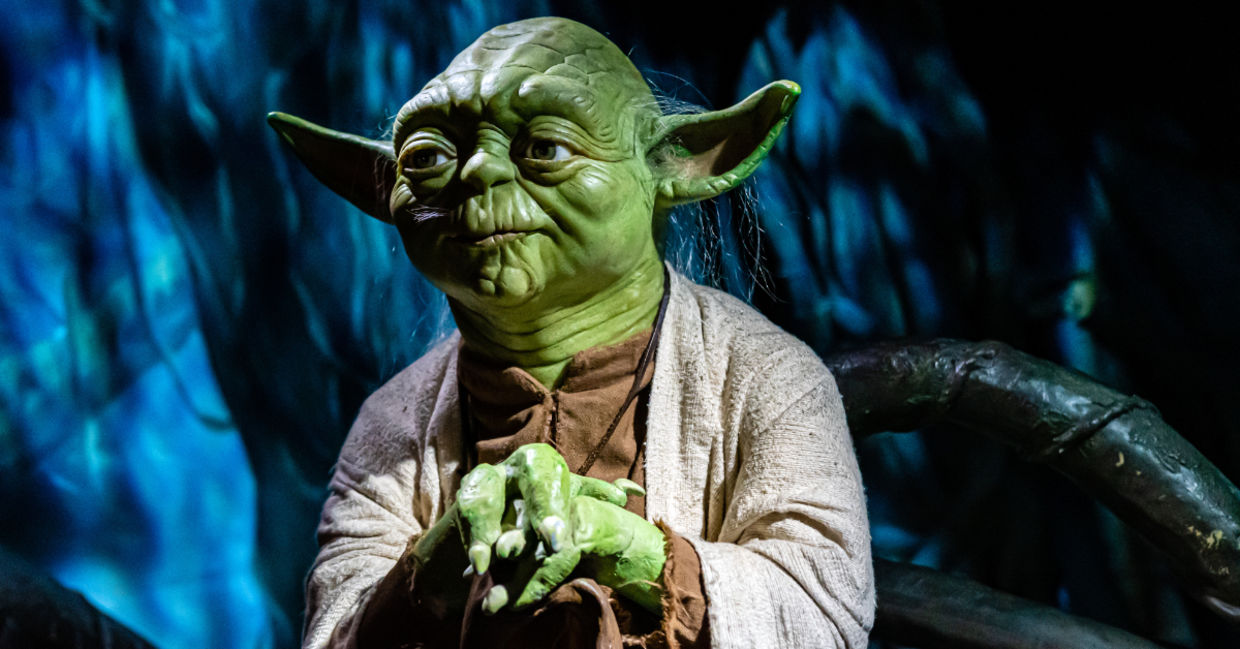
(ako photography / Shutterstock.com)
The Space Race Era captivated the American public’s mind like no other scientific venture. Neil Armstrong’s first steps on the moon ushered in a decade of manned space travel, high hopes, and lots of space-related science fiction. This space fever translated to the big screen, entertaining Americans with stories set in “a galaxy far far away.”
The Star Wars franchise which premiered in 1977, painted a picture of a fictionalized universe filled with aliens, interstellar warfare, hyperspeed space travel, and a collection of imaginary planets. Even though most of the sci-fi technology imagined in Star Wars, like deep space travel, laser swords, and Death Stars, has yet to (if ever) be realized in reality, researchers have actually gleaned real scientific breakthroughs from the franchise.
Here are some of the ways Star Wars has inspired Earth-bound exploration in a variety of research fields.
The hunt for Tatooine and other Star Wars planets
View this post on Instagram
Luke Skywalker, the protagonist of the original Star Wars trilogy grew up on an arid and dusty planet called Tatooine, National Geographic reports. The most compelling thing about this barren world, other than the Tusken Raiders who inhabit it, was its iconic double sunset.
In contrast to Earth, Tatooine has two suns at the center of its solar system. This may sound strange and alien, but researchers have uncovered dozens of planets that also have twin suns, and are interested in exploring these planets’, which are called circumbinary planets’, potential to host extraterrestrial life.
In fact, astronomers Matthew Muterspaugh and Maciej Konacki collaborated on a project to identify circumbinary planets in nearby galaxies. They called their project “The Attempt to Observe Outer-planets In Non-single-stellar Environments” or TATOOINE for short.
Astronomists aren’t just curious about the potential for aliens making their homes on Tatooine-like circumbinary planets. They also think that studying the conditions in which Tatooine formed “a long time ago in galaxies far far away,” while under the influence of gravity from both suns, can offer clues about planetary formation. Too bad, NASA can’t interview Luke Skywalker about his home planet’s prehistory.
The Geology of Star Wars
Tatooine isn’t the only Star Wars universe’s planet that scientists are interested in. Stanford Earth Matters Magazine reported that Stanford Geologists have discussed other unique Star Wars planets. Anakin Skywalker, hero-turned-villain of Star Wars, finds himself dueling nearly to the death on the volcanic planet, Mustafar. Geologist Sonia Tikoo-Schantz explains that Mustafar is probably similar to Jupiter’s moon, Lo, which has such strong tectonic forces acting on it, because of Jupiter’s intense gravitational pull. Although Mustafar is at least a little cooler than Lo, because there is time for a fight, before Anakin gets burned near to a crisp.
By contrast, Hoth is a fictional icy planet, the last base of the rebel alliance. Geologist Mathieu Lapôtre compares this to the Snowball Earth during the extreme Ice Ages of Earth’s prehistory. Maybe studying Hoth can help geologists understand more about Earth, minus Hoth’s giant tauntaun lizards.
View this post on Instagram
How to make a laser sword
Whether at sci-fi conventions, or at Toys R Us, lightsabers are one of the most ubiquitous pieces of technology from the Star Wars universe. Every Jedi knight and Sith lord has their own laser sword, which they can use to attack the enemy, cut through locked doors, and even deflect bullets. Lightsabers in the Star Wars universe come in a variety of colors, and the laser beam can be extracted or withdrawn at the touch of a button.
According to Business Insider, researchers uncovered a method for getting light particles to stick together and make a molecule, the same technology they claimed was behind the lightsaber. Unfortunately (or, maybe, fortunately) the light-particle molecule didn’t have the same properties as a lightsaber. Although the sustained beam was impressive, the light doesn’t cut, and just passes through other lights. Reportedly, the “real” lightsabers are made from more powerful light sources, like gamma rays, something that researchers haven’t fully succeeded in harnessing…yet.
Live Science reports that we may yet actually be one step closer to harnessing lightsaber technology. The masterminds behind the YouTube channel, Hacksmith, created a retractable plasma-based laser sword that, like the lightsaber, could cut through solid metal, in 2018. Hacksmith’s attempt is closer to the “real” thing, but requires a propane fuel pack, so it’s not quite as compact as Darth Vader’s lightsaber was.
View this post on Instagram
Faster than the speed of light
Famously, the speed of light is the “speed limit of the universe,” that no accelerating object can travel faster than. But, according to Live Science, in Star Wars, Han Solo, a down-on-his-luck pilot, helps Luke Skywalker and Obi Wan Kenobi escape the Imperial Stormtroopers by engaging in hyperspace, super-fast space travel.
View this post on Instagram
Surprisingly, the United States’ government has been interested in “hyperspace” or “warp-drive” research. Warp drive travel would apparently allow nearly instantaneous travel by distorting the fabric of space-time.
Physicist Miguel Alcubierre showed that this futuristic concept may be possible, by using negative and positive energy to compress the space time continuum in front of a spaceship, and expand space-time behind it. At this point,hyperspace is still in the theoretical realm, but maybe in a few centuries, the Millenium Falcon, Han Solo’s ship, could be a reality.
Prosthetics and psychology: the medical research underlying Star Wars
It isn’t just the physics and astronomy of Star Wars that excite researchers. Star Wars may also have lessons for the medical community. Before Darth Vader reveals to Luke Skywalker that he is his father, he cuts off Luke’s hand with a lightsaber. Fortunately, the rebel doctors are able to craft a near perfect prosthesis with the same full range of motion that Luke’s original hand gave him. According to Live Science, effective prosthesis, once in the realm of science fiction, are now a real medical reality. Bionic arms really can give amputees control over their missing limb.
View this post on Instagram
National Geographic is more concerned with the medical technology used to rehabilitate Darth Vader, Anakin Skywalker’s evil alter-ego. After Anakin falls into the lava on planet Mustafar, the Empire gives him a hermetically sealed suit that encases his burned body. Ronan Berg, a doctor at Denmark’s University Hospital Rigshospitalet, surmises that the armor acts as a wearable hyperbaric chamber, forcing air in Vader’s charred lungs. In the real world, Berg explains, even if that suit was a possibility, doctors would probably prefer a lung transplant to a wearable hyperbaric chamber.
But Vader’s suit does serve another medical purpose. Berg and fellow physician Ronni Plovsing use Vader’s distinctive rattling breath to teach medical students to identify respiratory illnesses.
Meanwhile, psychologists zero in on another medical aspect of the films. Anakin Skywalker/Darth Vader has been diagnosed with severe borderline personality disorder by a team of French psychiatrists. Other characters in the Star Wars universe have been diagnosed with psychopathy (Jabba the Hutt), gambling addiction (Lando Calrissian), and depression (Obi Wan Kenobi) by a University of Auckland team. The team released research psychoanalyzing Star Wars’ heroes, villains, and supporting characters.
Jedi Master and humanoid alien, Yoda, is known for his iconic wisdom throughout the films. Yoga believes that the more we learn the more we discover how much we do not know. True to Yoda’s thinking, researchers are using Star Wars to explore new topics and learn more about the world of Star Wars, and the real world, simultaneously.
YOU MIGHT ALSO LIKE:
Robotic Surgery May Be the Medicine of the Future
This Science Fiction Inspired Airplane has no Moving Parts
These Glassblowers Help Enable the Future of Science







